The heat wave that has been suffocating Ukraine in recent days has sparked another wave of debate about whether the climate change on our planet is taking place, and what might cause it. People often make arguments based on their own experience, which is not always objective. In addition, not everyone understands how the climate works. So we decided to talk about it.
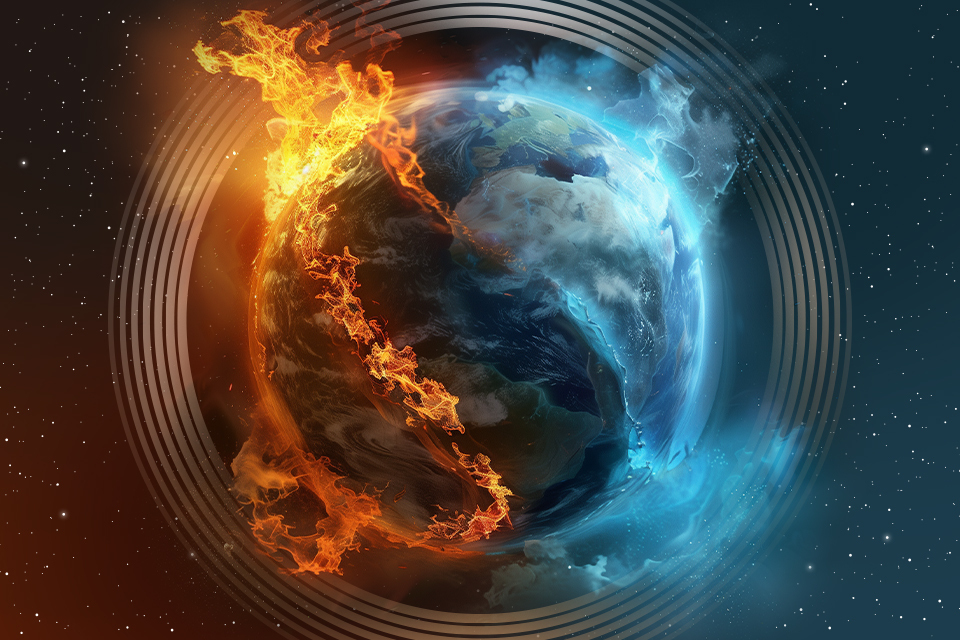
Heat in Ukraine and beyond
In recent days, one of the main topics in Ukraine and beyond has been the incredible heat. Waves of hot air are also sweeping across India, China, the United States, and much of Europe. In many places, the average temperature for June was even lower than usual.
All of this is causing controversy, or even discussion, about whether the climate on our planet is changing and what role humans play in it.
In addition, people clearly do not understand how the climate actually works, and they make arguments that seem quite rational to them, but in reality are not. To do this, we need to assess the situation on a broad scale of space and time, as well as understand how the climate works in principle, and this is a rather complicated topic. So we decided to explain how this process works and how humans can or cannot influence it.
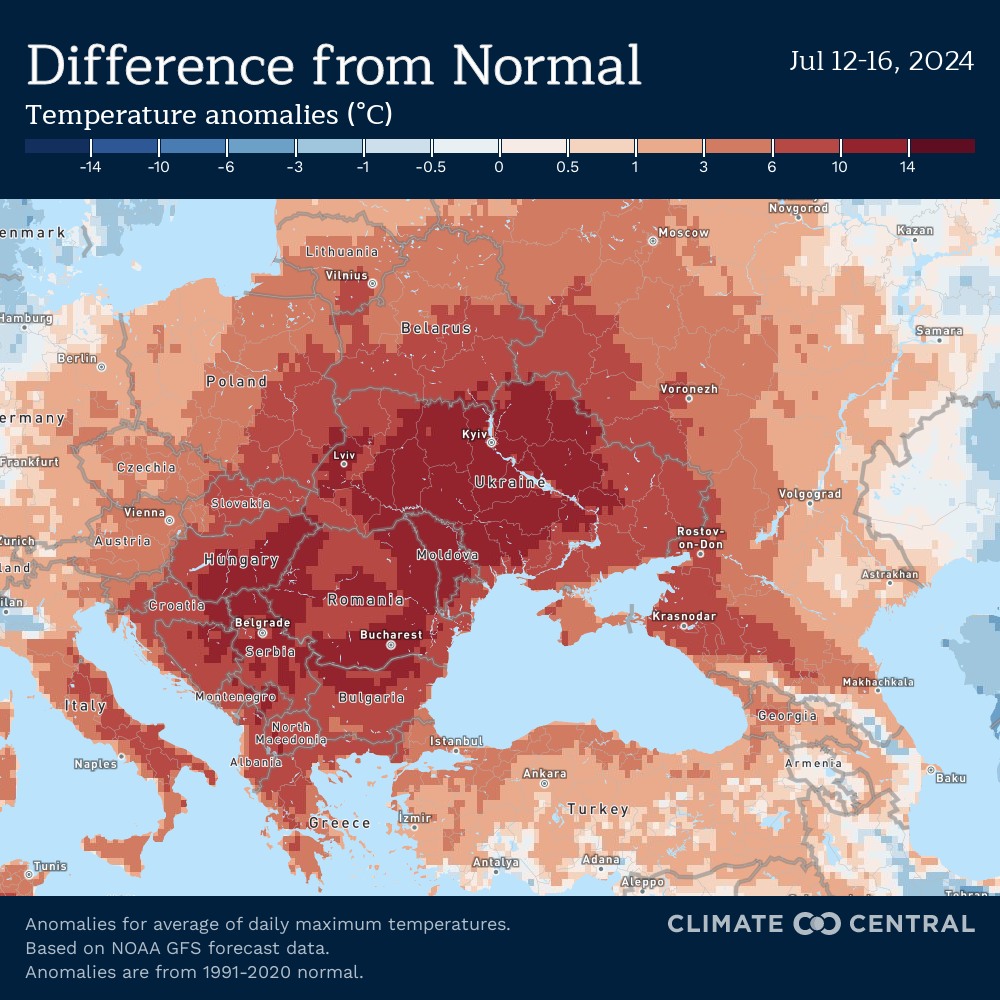
Earth’s heating by the Sun
The main source of heat on Earth is the Sun. The hot depths of our planet and cosmic radiation also contribute, but they make up less than 1% of the total energy input.
When the sun’s rays reach the Earth’s atmosphere, a small part of them is reflected from it and clouds, while the majority passes through the gas shell and reaches the surface. The latter can be either land or sea. But, in any case, a significant part of the energy is absorbed by them. The rest is reflected back into space.
This would be fine, if some gases present in the atmosphere, as well as clouds and other liquid and solid particles in it, did not reflect some of the radiation again, directing it to the surface. All the energy absorbed by the atmosphere by the ocean and land does not disappear, but is converted into heat. Simply put, everything on Earth is heating up.

At the same time, this happens unevenly. It is easier for the sun’s rays to heat solid ground, more difficult to heat water, and even worse to heat air. The same is true for cooling. In the temperate latitudes of the Earth, this effect is best seen on a sunny morning around April or May. The ground becomes very warm quite quickly, but bodies of water are still too cold to swim in. The air remains very cold.
Average temperature on the planet
The sun’s illumination of our planet follows two main cycles: daily and annual. Simply put, the earth and water are intensively heated during the day and then cooled all night. In winter, the days, i.e. the periods when the surface is heated by the Sun, become shorter because the equator of our planet is tilted towards the ecliptic. In summer, the opposite is true.
It should also be remembered that when it is winter in the Northern Hemisphere from an astronomical and climatic point of view, it is summer in the Southern Hemisphere, and vice versa. That is, even on the basis of such a simple model, we can conclude that the climate on Earth is a complex oscillatory system, the state of which should be described statistically.
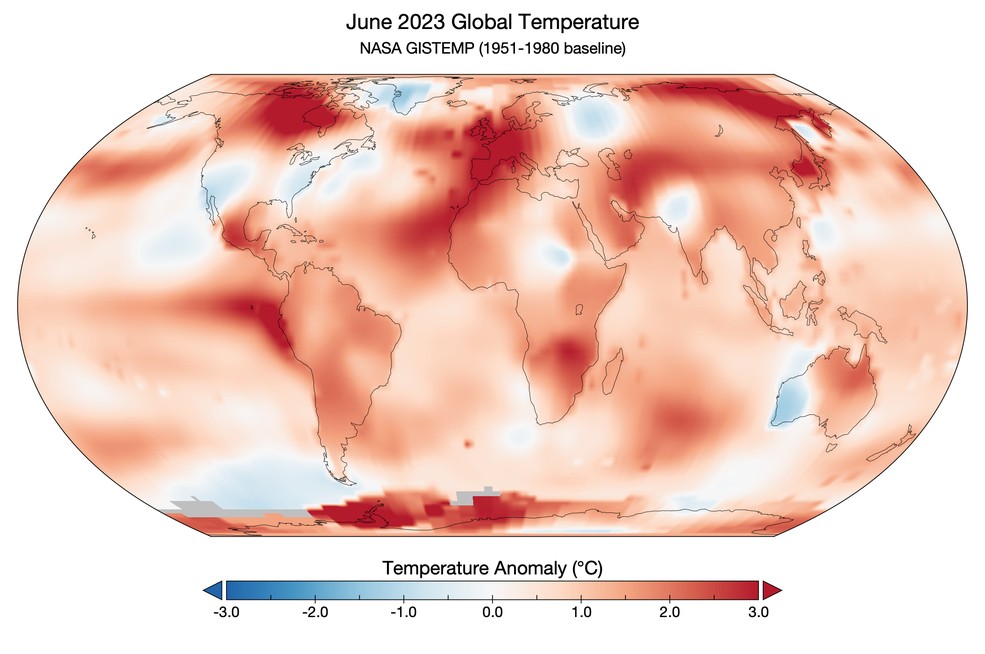
The ironic phrase “average temperature of the patients in the hospital” is usually used to emphasize the irrelevance of a statistical approach to describing certain processes. Because some patients have a bad fever, some feel fine, some have rigor mortis, but on average their temperature is elevated, but within the normal range.
However, in the case of the Earth’s climate, this approach is the only one possible, as it allows us to understand at least something at all. Average temperatures are calculated separately by month, by year, for different regions, countries, oceans, and the Earth as a whole. That is why climate scientists’ explanations are usually so confusing. But the reality is even scarier.
The mountains
If the above-mentioned climate model described all the phenomena associated with it, then the globe on temperature maps would resemble a ball covered with a more or less even temperature gradient that follows the sunspot across the surface of our planet. However, in reality, this is not the case, and the reason is not only that the earth, water, and air heat and cool differently, but also that the latter two media are able to move stored energy along with the flow of matter within them.

The breeze is the result of different heating rates of land, water and air
The most striking example of this can be observed during a vacation at sea. During the day, the beach heats up quickly and heats up the air above it. It begins to move toward the sea, and colder masses move from opposite direction. The effect is that a fresh breeze blows from the sea, and if you go into the water, the heat will come from the shore.
At night, especially in the morning, the opposite is true. The land has cooled down, but the sea has not yet. That’s why a pleasant warm breeze blows from the water. And this process is happening all over the Earth. Cold and warm air masses move toward each other, but they do not mix for a long time and bring warm or cold weather with them.
But that’s not all. The land has its own relief. And the air above it is mostly heated in the lowest layer. It is the densest and most polluted. It is where most clouds are located. Higher air is usually colder and cleaner. Therefore, if there is an obstacle in the form of mountains on the way of air masses, this leads to a whole range of interesting consequences.
On the one hand, a high-altitude zone appears in the mountains themselves. The dense air remains below, and a much more dilute and gaseous mixture with a much higher heat content comes into contact with the surface. The energy accumulated by the surface is not enough to warm it up, so the rocks, on the contrary, cool themselves.
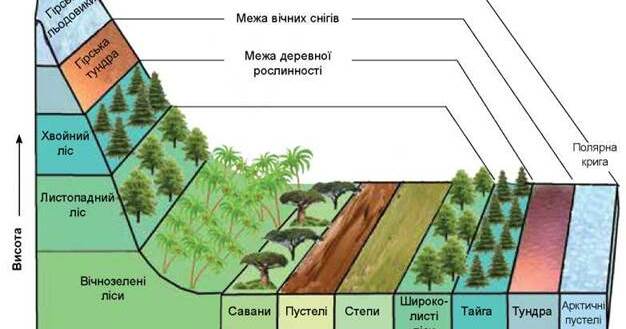
Relationships between height of a mountain and climate zones. Source: vseosvita.ua
A climate arises that would otherwise be located somewhere to the north. The higher the altitude, the colder it becomes. It gets to the point where even at the equator, where there are no long winter nights, glaciers similar to those in the Antarctic appear on the tops of mountains.
At the same time, the mountains work as a natural boundary, preventing air masses from moving and separating cold and warm climates more sharply. This is how the conditions for viticulture emerged in Zakarpattia, and the subtropical climate on the southern coast of Crimea.
Insidious water
However, all the difficulties with the influence of land topography on the climate are nothing compared to how it is affected by water. First of all, because it is capable of moving when heated, causing warm and cold ocean currents to appear. They also have a significant impact on the climate, as they work as a water system for heating and cooling the planet.
In addition, the evaporation of water from the oceans is the main mechanism for transferring the energy of heated water to the atmosphere. Huge amounts of thermal energy are converted into the movement of air masses. This is how storms and hurricanes arise, spreading heat and moisture over large areas.
By the way, moisture is another important factor in climate formation, which is closely related to both temperature and precipitation. That is, the Earth’s oceans are the main reason why its heat map is not a flat gradient, but has a much more interesting appearance.
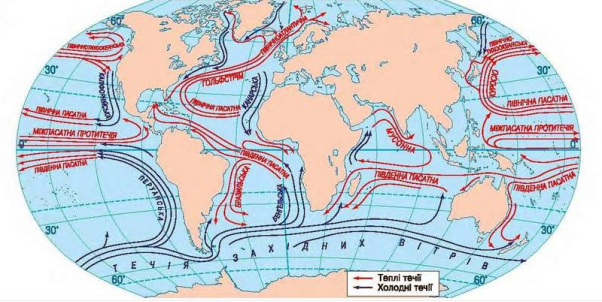
At the same time, water can also play the role of a global cooler for the planet. But for this, it needs to freeze. Ice has an extremely high albedo. That is, those areas of land and ocean covered by glaciers simply reflect much more of the sun’s rays into space than the land and open ocean, and thus reduce the power of the “climate machine” from the very beginning.
Global warming
From all of the above, it follows that climate is a continuous movement of air masses of different temperatures and humidity. That is, warming and cooling in different parts of the surface occur constantly and form a complex mosaic. So how can global warming affect all of this?
The main mechanism is that industry and transportation emit huge amounts of various gases and dust that increase the greenhouse effect. That is, part of the solar energy that has already been reflected from the surface of our planet outside the atmosphere does not leave and is converted into heat.
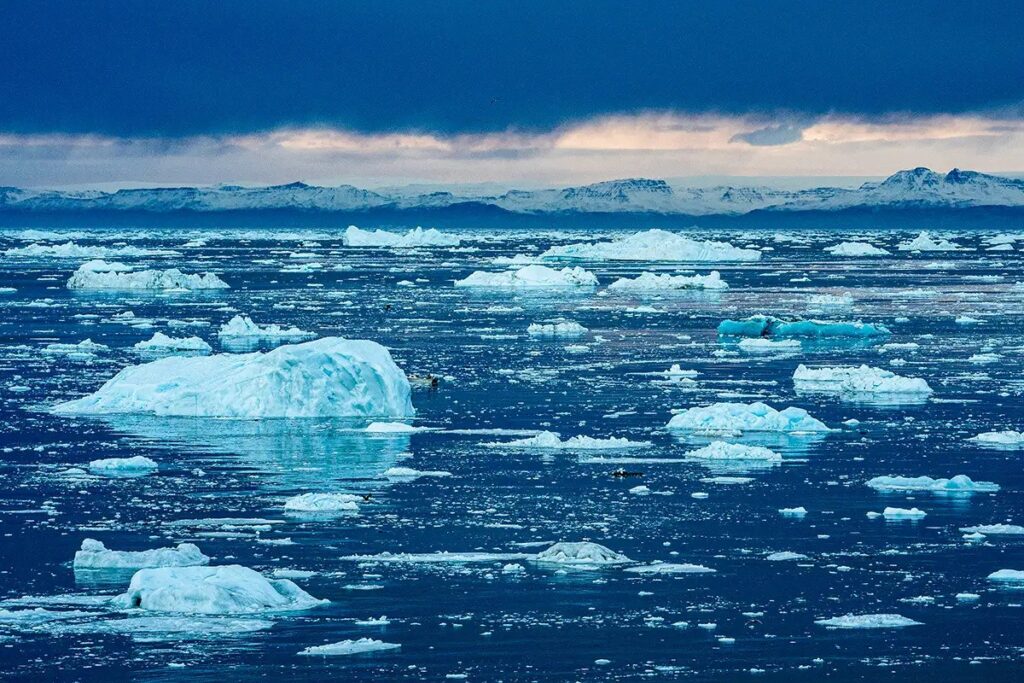
Both land and oceans receive additional energy. Dry hot air masses form over the former. In the latter, the evaporation of heated water and its transportation by currents increases. At the same time, the ice sheets initially remain relatively invulnerable, and cold air masses continue to dominate them.
That is, despite the fact that the average temperature on the planet is rising, there are still places where it has not changed. And in some of them, the climate may even become colder. This is due to a change in the nature of air mass movement. Those regions where warm air used to linger may now be overrun by cold anticyclones coming in from the north.
The weather will remain chaotic. In temperate latitudes, global warming should be observed exactly as it is now: a summer in which there may still be a couple of weeks of cold rain, but more and more of it turns into an unimaginable hell. Autumn will be delayed until January, but there is still a chance of a cold front with snow coming in from the north.
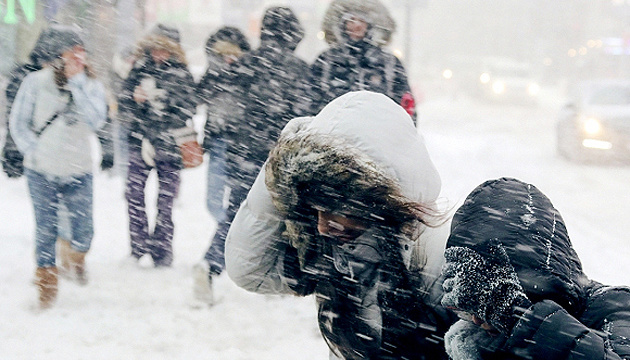
It will be followed by a week of sub-zero temperatures and jokes about where is the global warming when we need it so much. But then the heat will return. And every year the situation will change more and more. Because the ice caps at the poles will gradually melt, and instead of ice, which reflects the sun’s rays well, they will meet water, which absorbs their energy well.
And the more the ice melts, the faster this process will be. This phenomenon is called positive feedback. Over time, the climate may begin to change the Earth’s biosphere and seriously affect agriculture. And this will have an impact on global economic processes.
Natural processes
However, not everyone agrees with such apocalyptic predictions, and there is a certain amount of rationality in their position. As already mentioned, the climate is a fluctuating process. It has natural cycles, and they are not limited to a day or a year. There are those that last for several years or even decades. They are related to ocean currents.
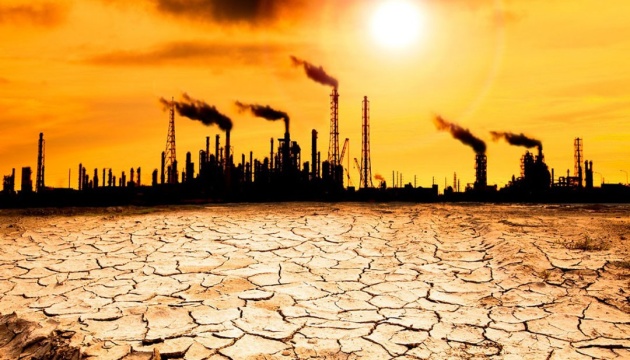
There are also much longer fluctuations, such as the Milankevich cycles associated with the precession of the Earth’s axis. They last for tens of thousands or even millions of years, and they can also cause global changes that are quite commensurate with the worst-case scenarios of global warming.
Therefore, despite the fact that scientists know the specific mechanism of how human civilization could harm the climate, there is still no absolute certainty that we are really to blame. There is no doubt that climate change is a reality. A steady increase in the average temperature, both globally and in certain regions, has been recorded for several decades.
However, there is still a small chance that this is a natural process. Although there is a much greater chance that it is the result of human activity.
What cannot affect the climate
While many people still deny the possibility of global warming due to industrial emissions, they also believe that other, sometimes very exotic, factors can affect the weather.
For example, many conspiracy theories still blame global warming on HAARP, an American ionospheric research facility located in Alaska. It radiates a large amount of energy into the sky, and many believe that it affects the climate.
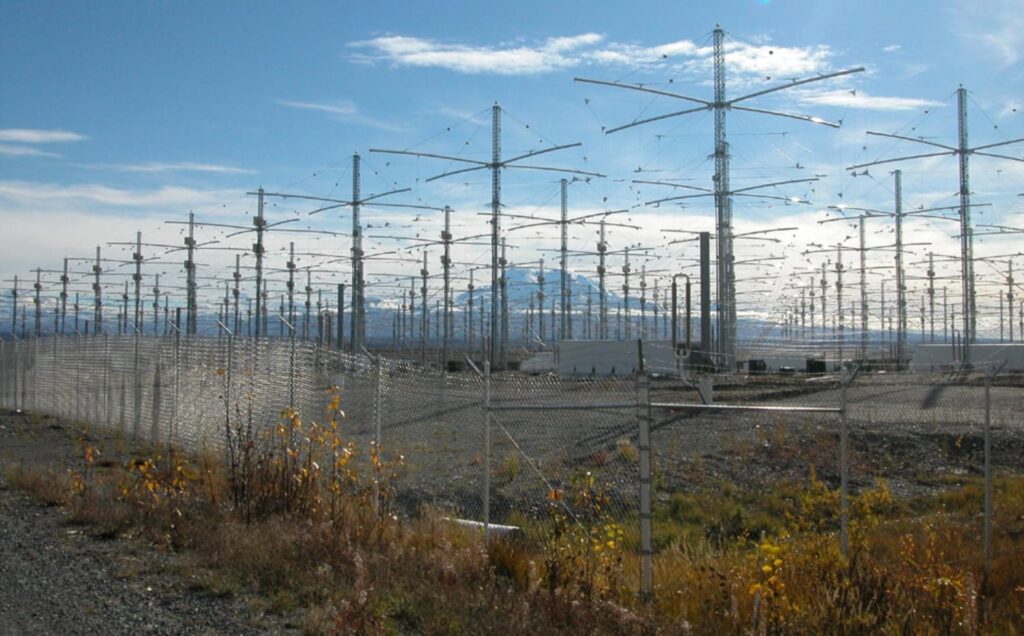
Why it cannot be HAARP, you can read in this article. In short, its energy is too low to heat anything strongly enough. And it does not affect the layers of the atmosphere that determine the weather. So it’s definitely not worth blaming it.
There is also very little chance that global warming can be caused by the Sun’s activity. The cycle, which is now approaching its maximum, is not related to the radiation of the luminary, but to its magnetic field.
And there is no correlation between the average temperature on the planet and solar activity. The former has been growing steadily over the past few decades. The latter has experienced several minima and maxima, which were weaker each time, and only the last one was quite powerful.
In general, the situation with climate change can be characterized as follows. We know for sure that it is happening, despite the fact that sometimes it seems that it is not. We know how it is happening, what we can expect in the future, and these forecasts are not good.
The heat is likely to return again and again. We are still not sure whether the human industry is the cause of this, but one way or another, emissions need to be reduced. We can only hope that this will be done in the coming decades.

